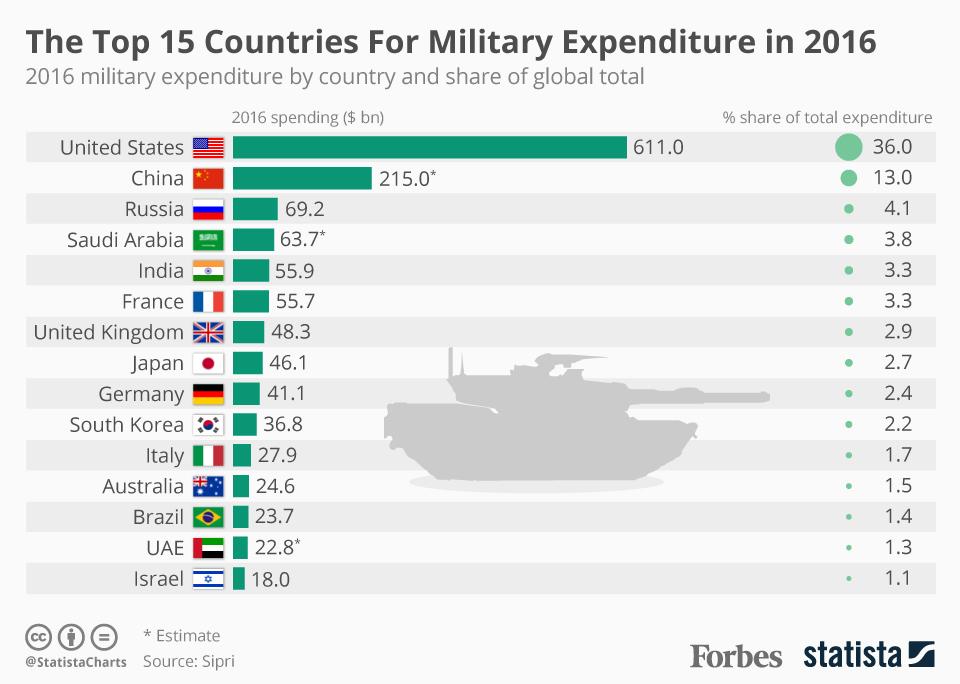

The first spike in defense spending, and in turn taxes, came during the very beginning of the 19th century. The United States has fluctuated for decades, depending on the conflict of the time. The Saturday Review magazine in February 1898 outlined the levels of military expenditure as a percentage of tax revenue spent by the then great powers for the year 1897: Main article: Past military expenditure by country

Historic expenditure Defense spending in the UK over time This was more than the next 10 countries combined, namely China: $292 billion, Russia: $86 billion, India: $81 billion, Saudi Arabia: $75 billion, United Kingdom: $68 billion, Germany: $56 billion, France: $54 billion, South Korea: $46 billion, Japan: $46 billion and Ukraine: $44 billion. The US continued to lead the way in military spending, with $877 billion. With the Russo-Ukrainian War, European expenditures rose by 13 percent, the largest year-to-year increase since the end of the Cold War. It increased 3.7 percent over the previous year. Īs of 2022, global military spending topped US$2.3 trillion. In 2018, the United States spent 3.2% of its GDP on its military, while China 1.9%, Russia 3.9%, France 2.3%, United Kingdom 1.8%, India 2.4%, Israel 4.3%, South Korea 2.6% and Germany spent 1.2% of its GDP on defense. Īccording to the Stockholm International Peace Research Institute, in 2018, total world military expenditure amounted to 1.822 trillion US$. Global, regional and by countries Īmong the countries maintaining some of the world's largest military budgets, China, India, France, Germany, Japan, Russia, the United Kingdom and the United States are frequently recognized to be great powers. Still, others maintain military expenditure is a drag on development. US military analysts suggest military expenditure is a boost to local economies. There are controversial findings and theories regarding these topics. The effects of military expenditure on a nation's economy and society, and what determines military expenditure, are notable issues in political science and economics. Generally excluded from military expenditures is spending on internal law enforcement and disabled veteran rehabilitation. Factors include the size of that country's economy, other financial demands on that entity, and the willingness of that entity's government or people to fund such military activity. The size of a budget also reflects the country's ability to fund military activities. It also gives an idea of how much financing should be provided for the upcoming fiscal year. Military budgets often reflect how strongly a country perceives the likelihood of threats against it, or the amount of aggression it wishes to conjure. The US continued to lead the way in military spending with $877 billion, more than the next 10 countries combined. As of 2022, global military spending topped US$2.3 trillion. Financial resources dedicated by a state for purposes of national defense A pie chart showing global military expenditures by country for 2019, in US$ billions, according to SIPRI Map of military expenditures as a percentage of GDP by country, 2017 Ī military budget (or military expenditure), also known as a defense budget, is the amount of financial resources dedicated by a state to raising and maintaining an armed forces or other methods essential for defense purposes.


 0 kommentar(er)
0 kommentar(er)
